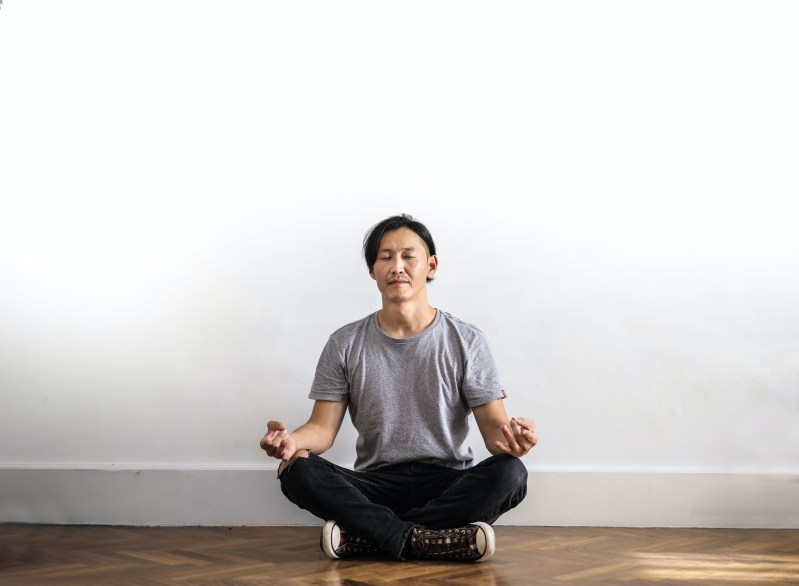
Living a calmer, more balanced life requires mindfulness. Practices such as meditation, yoga, and breathing exercises can help you reduce stress and improve your mood by being present in the moment. Embrace mindfulness as a powerful tool for cultivating peace amid life’s storms.
While there are many ways to practice mindfulness, meditation is one of the more common forms. Taking a few minutes each day to practice meditation can help you feel more connected to yourself and your environment. It can also help to create a sense of balance and inner peace. For maximum results, let’s explore how you can easily implement these practices into your daily routine.

What are the benefits of meditation and mindfulness?
Mindfulness is the practice of cultivating a focused awareness of the present moment, fostering a non-judgmental and accepting mindset toward one’s thoughts and surroundings, and allowing you to destress. Practices like meditation can increase self-awareness, focus, creativity, and decision-making and improve overall sleep quality.
A mindfulness practice can also help to reduce anxiety, depression, and stress, as well as help build resilience to manage difficult emotions. Additionally, if you are learning how to manage stress, mindfulness can help cultivate compassion and gratitude, which can lead to enhanced relationships with yourself and others.

How does stress affect your body?
Symptoms of stress can manifest physically in the form of headaches, fatigue, and muscle tension. When the body experiences stress, it releases a hormone called cortisol. A rise in heart rate, blood pressure, and respiration is caused by this hormone, which triggers the body’s “fight-or-flight” response. The body also releases adrenaline, which can increase alertness and energy levels but can also cause anxiety and restlessness. When the body is in a prolonged state of stress, these physiological changes can lead to exhaustion and other physical and mental health issues.

How to practice mindfulness and meditation
Mindfulness is a versatile practice that can be practiced anywhere, at any time. Its essence lies in fostering an awareness of our thoughts and feelings, encouraging us to observe them without judgment. This simple yet profound act holds the power to diminish stress, anxiety, and depression while nurturing heightened empathy and compassion. Beyond these emotional benefits, mindfulness can enhance your focus and concentration, empowering you to cope with challenging emotions and strengthen your resilience.
If you are learning how to meditate, remember there is no wrong way to practice mindfulness. Everyone can find a way to incorporate it into their daily lives. It can be as simple as taking a few moments to observe your breath or as elaborate as engaging in a mindfulness meditation. Below are a few of the ways awareness can be incorporated into our daily lives.

Breathing exercises
One of the simplest and most effective ways to reduce stress is through breathing exercises. Breathing exercises do not necessarily have to be paired with meditation — they’re an effective mindfulness technique on their own — but meditation does require breathing exercises.
These exercises can be done at your desk or while you complete a task. Regular practice of breathing exercises can help to reduce stress and anxiety and improve overall well-being. Also, bringing your attention to your breath can help you focus on the present moment.
One of the best breathing techniques to have in your toolbox is the 4-7-8 breathing technique. It involves inhaling for four counts, holding for seven counts, and exhaling for eight counts. This technique can be used when feeling overwhelmed, anxious, or stressed. It can help you to relax and reset your emotional state.

Body scan meditation
Another great mindfulness technique is meditation. A great meditation practice to include in your routine is a body scan meditation, in which you focus on your body and observe any sensations you notice. This can help to create a sense of connection with your body and create a sense of calm and relaxation.
You can incorporate this practice into your daily routine at small intervals throughout the day to achieve inner peace and balance. Find a quiet corner or space where you can concentrate without distractions. Take a deep breath and focus on your breath. Make a mental note of any sensations that you notice as you scan your body from head to toe.

Guided meditation
When first starting out with mindfulness, guided meditation is often seen as the most approachable method. Guided meditations are easy to follow and provide instruction and guidance to help you focus on the present moment. They can also provide a sense of structure and support to your practice.
Guided meditation, like these by Tara Brach, can be a great way to get started with mindfulness and its benefits. It can be especially helpful for beginners who may need extra support and guidance. You can listen to a guided meditation on your lunch break or find many online that you can follow along with.
The benefits of mindfulness practices such as asana yoga, body scan meditation, breathing exercises, and guided meditation can be felt both physically and mentally. You can always customize your practice to suit your individual needs based on how your body feels at the time. By practicing meditation, one can cultivate a sense of connection with oneself and create a sense of calm and relaxation. Regular practice of mindfulness techniques can help improve mood and overall well-being.



